Imagine stepping into your backyard and being greeted by the vibrant colors of ripe fruits ready to be picked, each one a testament to your gardening efforts, no matter how small your space may be. For both budding enthusiasts and seasoned green thumbs, cultivating a fruitful garden in limited space isn’t just a dream—it’s an achievable reality that brings delicious rewards to your table and joy to your heart.
Whether you’re just starting your gardening journey or have years of experience digging in the dirt, the right selection of fruit plants can transform even the tiniest of plots into a productive paradise. This guide will unveil the best fruits to grow in small gardens, offering practical tips and insights designed to boost your confidence and success, ensuring your garden flourishes with minimal space.
In every page, you’ll discover how these carefully chosen fruits can maximize your garden’s potential, turning every inch into a bountiful harvest. Embrace the satisfaction and pride that comes with nurturing life from soil to supper, and embark on a rewarding adventure that promises not only sweet and nutritious treats but also a deepened connection with nature and your own green capabilities.
Container Strawberries (Compact & High Yield)
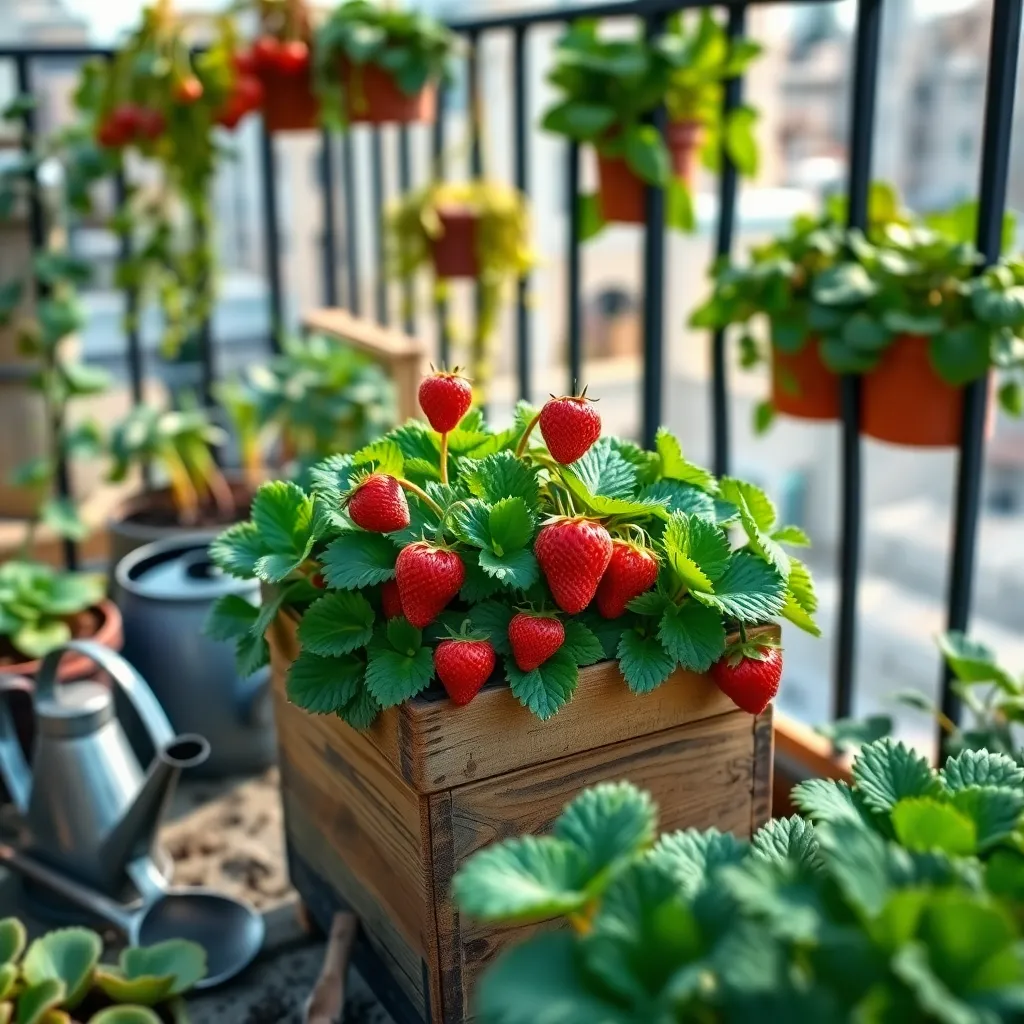
Container strawberries are an excellent choice for small gardens, offering both compact growth and high yields. Their adaptability makes them perfect for balconies, patios, and even windowsills, where space is at a premium.
To get started, select a well-draining potting mix that’s rich in organic matter to ensure the best growth and fruit production. Choose a container with adequate drainage holes, ideally one that’s 12 to 18 inches wide and 8 inches deep, to provide enough room for root development.
Ensure your strawberries receive at least 6 to 8 hours of sunlight daily. Position your containers in a sunny spot, rotating them occasionally to ensure even sun exposure, which will help maximize fruit yield.
Watering is crucial, especially in containers where soil can dry out quickly. Keep the soil consistently moist but not waterlogged, and consider using a drip irrigation system or a self-watering pot for more consistent moisture levels.
For more experienced gardeners, consider using a strawberry tower or vertical planter to grow multiple plants in a small space. This method not only saves space but also allows for easier harvesting and maintenance.
Dwarf Blueberry Bushes (Perfect for Patio Pots)
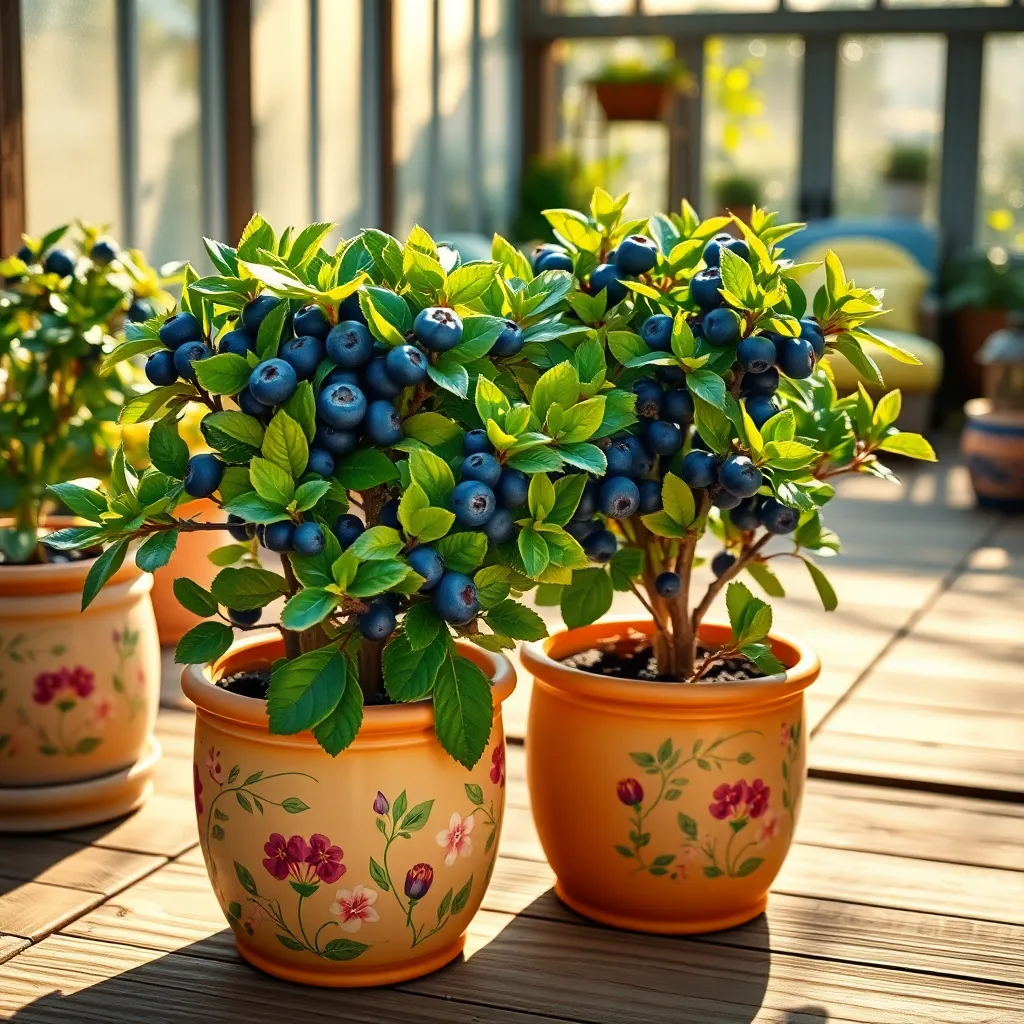
Dwarf blueberry bushes are an excellent choice for small gardens and patios, providing both aesthetic appeal and delicious fruit. These compact plants thrive in pots, making them perfect for gardeners with limited space.
Choose a pot that is at least 12 inches in diameter and has good drainage. Blueberries prefer acidic soil, so use a mix specifically formulated for acid-loving plants or amend regular potting soil with peat moss.
Place your pot in a spot that receives full sun for most of the day, as blueberries need at least six hours of sunlight to fruit well. Water regularly to keep the soil consistently moist, but avoid waterlogging, which can harm the roots.
For optimal growth, feed your plants with a fertilizer designed for acid-loving plants in early spring and again in late summer. Pruning is minimal but should be done in late winter to remove dead or weak branches, encouraging new growth and more fruit production.
Espalier Apple Trees (Vertical Growth Technique)
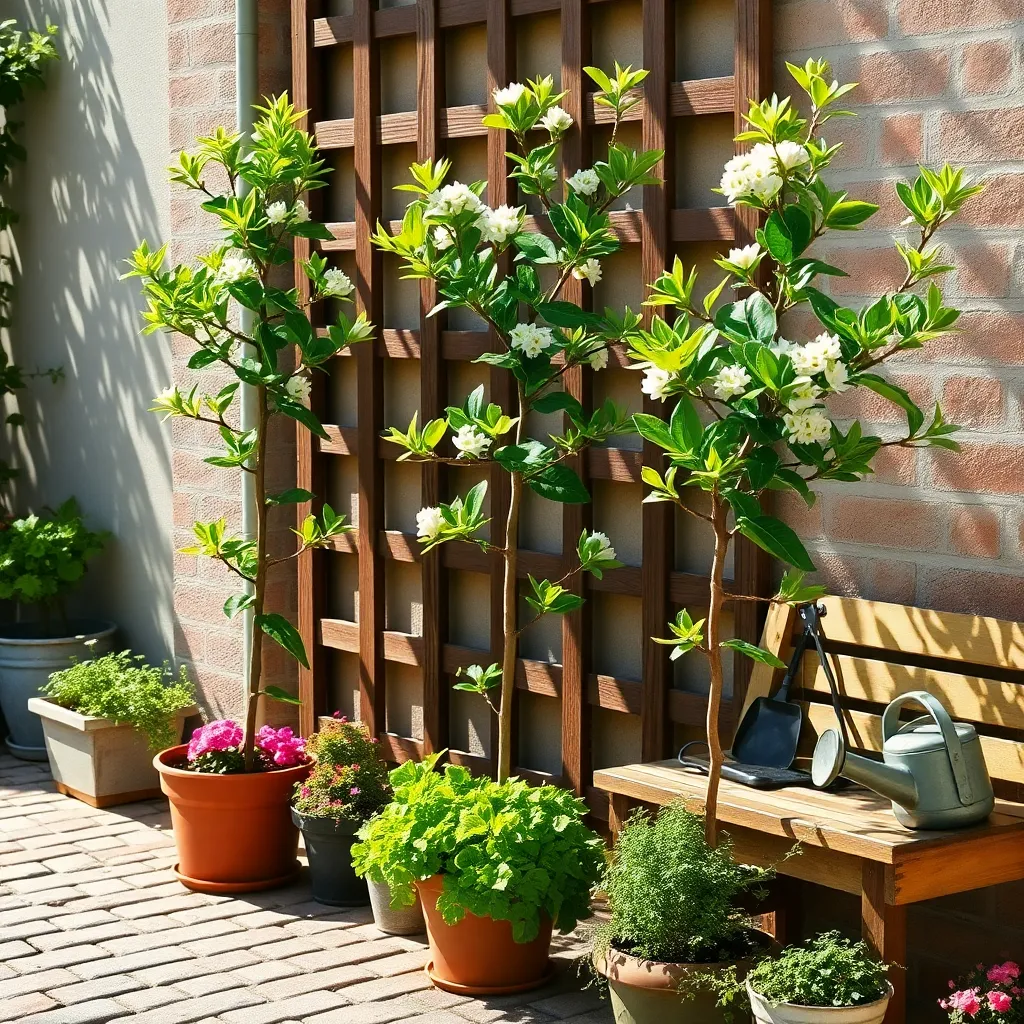
Espalier apple trees offer a creative solution for growing fruit in small spaces. This vertical growth technique allows gardeners to train apple trees along a flat plane against a wall or fence, maximizing space and sunlight exposure.
To start, choose a young apple tree variety that suits your climate, such as ‘Fuji’ or ‘Gala’. Ensure the wall or support structure receives at least six hours of sunlight daily, as apple trees thrive in full sun.
Begin training when the tree is young, as its branches are more flexible and easier to manipulate. Attach horizontal wires to your support structure, spaced about 18 inches apart, and gently tie branches to these wires using soft ties.
Regular pruning is essential to maintain the tree’s shape and encourage fruit production. Prune in late winter while the tree is dormant, removing any shoots that do not conform to the desired espalier pattern.
Water your espalier apple tree deeply once a week, ensuring the soil remains consistently moist but not waterlogged. Fertilize in early spring with a balanced fertilizer to promote healthy growth and abundant fruiting.
For a more advanced technique, consider experimenting with different espalier designs, such as the fan or candelabra shape. These designs not only add aesthetic appeal but can also enhance fruit yield by improving light penetration and air circulation.
Columnar Peach Trees (Space-Saving Variety)
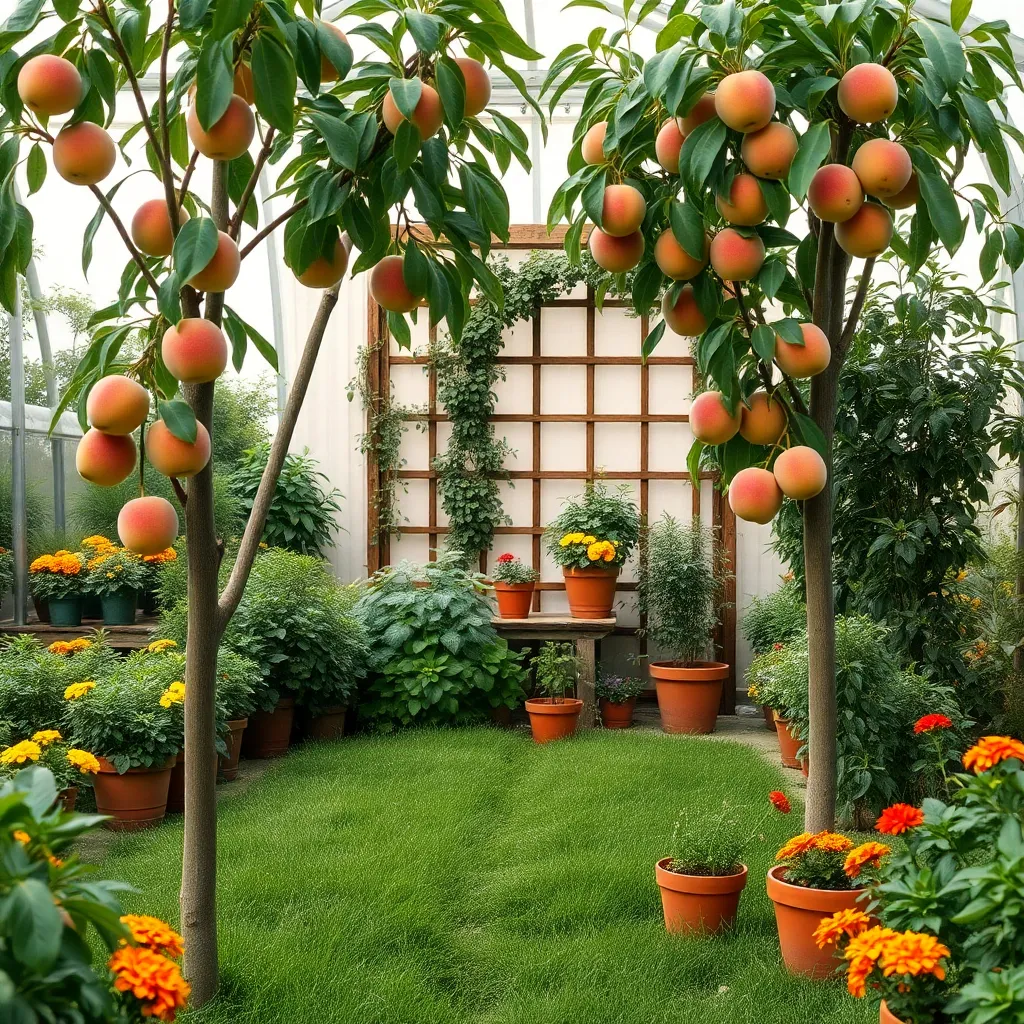
For small garden spaces, columnar peach trees offer a brilliant solution, providing both beauty and bounty. These trees grow upright rather than outward, allowing you to enjoy juicy peaches even in a limited area.
Ensure your columnar peach tree receives at least six hours of sunlight daily for optimal growth. Plant them in well-draining soil, preferably sandy loam, to prevent waterlogged roots.
Water your tree once a week, increasing frequency during hot, dry spells to maintain healthy growth. Applying a layer of mulch around the base helps retain soil moisture and suppress weeds.
Prune your columnar peach tree annually to maintain its shape and encourage fruit production. Focus on removing dead or crossing branches, which can improve air circulation and reduce disease risk.
Hanging Tomato Planters (Maximize Vertical Space)
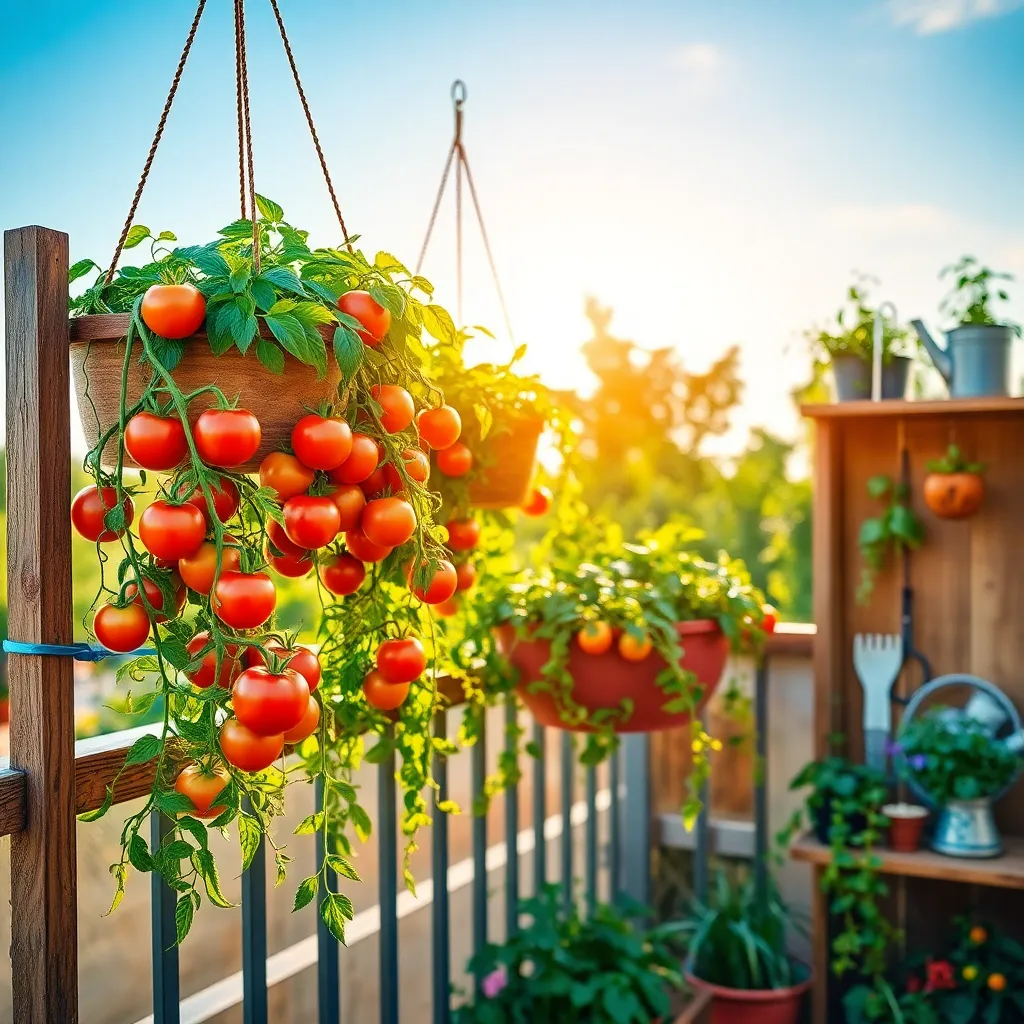
Using hanging tomato planters is an excellent way to maximize vertical space in a small garden. These planters allow you to grow fresh tomatoes without needing a traditional garden bed, making them perfect for balconies or patios.
To get started, choose a variety of tomato that thrives in containers, such as ‘Tumbling Tom’ or ‘Cherry Cascade’. These types are naturally compact and produce abundant fruit throughout the growing season.
Ensure your hanging planter has good drainage to prevent root rot, and fill it with a high-quality potting mix rich in organic matter. Watering is crucial, especially in hot weather; aim to keep the soil consistently moist but not waterlogged.
For best results, place your hanging tomato planter in a location that receives at least six to eight hours of sunlight each day. Fertilize regularly with a balanced, slow-release fertilizer to support growth and fruit development.
Advanced gardeners might consider using a self-watering hanging planter to reduce maintenance and ensure consistent moisture levels. Regular pruning of excess foliage will help increase air circulation and reduce the risk of disease.
Conclusion: Growing Success with These Plants
In exploring the ‘Best Fruits to Grow in Small Gardens,’ we uncovered five key relationship concepts: nurturing growth, weathering seasons of change, sharing the fruits of labor, understanding unique needs, and fostering patience. These principles not only apply to gardening but also mirror the essence of cultivating thriving relationships. As you embark on this journey of growth, why not take an actionable step today by starting a small garden, either physically or metaphorically? Choose one relationship that needs nurturing and begin tending to it with care and intention.
Remember, relationships, much like gardens, flourish with consistent attention and love. To keep this insightful guide at your fingertips, make sure to save or bookmark the article. It will serve as a valuable reference as you navigate the intricate dynamics of your relationships. Embrace the possibility that through dedication and understanding, your relationships can blossom into a vibrant, fruitful part of your life. With each step you take, know that the seeds of connection you plant today will lead to a harvest of meaningful, enduring bonds tomorrow. You have the power to cultivate these connections—start now!
